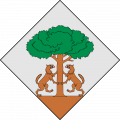

The place developed slowly during the middle ages around the two main streets, the Carrer Major and the Carrer de Dalt. There is evidence of a castle - or perhaps a fortified house - in the 14th century, where Elionor Maria of Aragon stayed. Nothing remains of the castle, or of the original Romanesque church, though some remains have been attributed to the latter.
Wine-growing has predominated since the 18th century, complemented by other Mediterranean crops: olives and almonds. In the 19th century other produce such as hemp was cultivated, and there were plots producing fruit and vegetables. Figs were also grown, and dried on rows of sticks in squares and on flat roofs.

Ajuntament de Gratallops
C/ de dalt, 13
43737 Gratallops Tarragona
Spain
Opening hours:
Monday to Friday: 9:00 a.m.-2:30 p.m.
Gratallops is to be found in the central area of the Priorat county on a hill above the Siurana river.
municipal open air swimming pool, football pitch, library, cultural centre, hotels, inns, holiday apartments, restaurants, bakery, food shop, wine shop, and a farm shop which belongs to the co-operative.
The annual "fiestas" are 20th January "Sant Sebastià". On the last Sunday of January there is a procession to the Consolació hermitage. On 10th August the village celebrates its "Fiesta Mayor" in honour of Sant Llorenç (Saint Laurence).
The Consolació hermitage is worth a visit. It is a Romanesque building dating from 12th century, although it was extended and modified over various centuries. It is to be found atop a hill, surrounded by vineyards with marvellous views over the region.
The "Casa dels Frares" or "Friars' House" can be found on the main street (Carrer Major) which boasts a Renaissance doorway and stone arch. On the same street, you can see the "Arc de Pedra" or "Stone Arch" which spans the street and is made of red sandstone. It is believed that this was once one of the main access routes inside the village.
The parish church of Sant Llorenç dates from the 18th century and is neoclassical in style with three naves, dome and bell-tower.
The "Cooperativa Agrícola" or La Vinícola del Priorat was founded in 1917 and groups various co-operatives of the surrounding villages of el Lloar, la Vilella Baixa i la Vilella Alta. The co-operative winery in Gratallops is currently open to visitors as well as some other private wineries in the village.
The village can be reached by road from Falset via the T-710; from El Lloar via the T-712; from Margalef via the T-713 and T-702 (via Cabacés) and the T-710 (from La Vilella Baixa); from Cornudella via the C-242 (via Venta d’en Pubill), the T-702 (via Poboleda as far as La Vilella Baixa) and from here on the T-710; and from Porrera via the T-711 (via Torroja).